
5 Major Diseases To Keep Away From Your Wheat Crop For A Better Yield.
- By Agrosiaa Admin --
- Feb 13, 2021--
-
As you all know wheat is the world's most important grain crop.ÂWheat ranks first position in the world among the cereals both in respect of area and production. In India, it is the second important food crop being next to rice and contributes to the total food grain production of the country to the extent of about 25%.To get more yield of wheat, we should try to avoid the causes of its yield loss.What are the reasons to cause more loss in wheat yield?In this blog I am going to share you the reason behind it. Yes! Diseases of wheat crop those are responsible for yield losses.
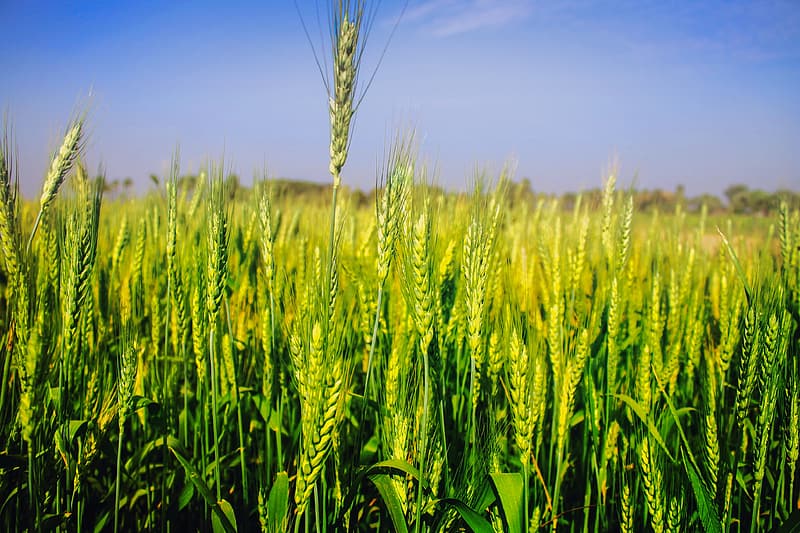
HEALTHY WHEAT CROPThe major diseases of Wheat cultivation:
1. Rusts of Wheat- Stem or black rust
- Brown rust or leaf rust
- Yellow or stripe rust
2. Smuts of Wheat- Loose smut
- Flag smut
3. Bunts
- Hill bunt or Common bunt or stinking smut or covered smutÂ
- Karnal or Partial bunt
4. Powdery mildew of wheat
5. Tundu disease of wheat
Rusts of Wheat caused by the fungus Puccinia species
Stem or black rust caused by Puccinia graminis f. sp. Tritici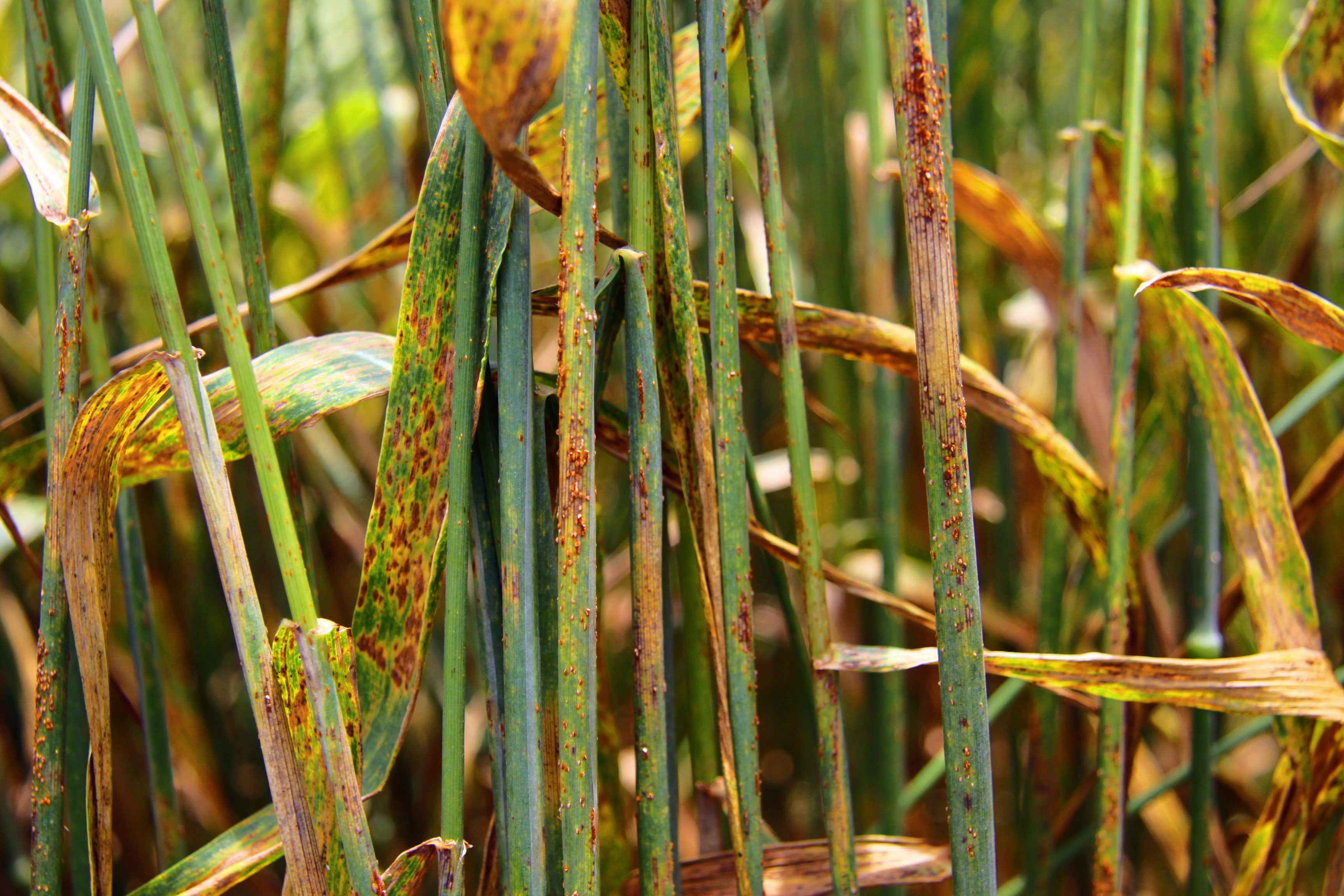
STEM OR BLACK RUST OF WHEAT
Disease symptoms
- Symptoms are produced on stem, leaf sheaths and upper and lower leaf surfaces.
- Dark reddish brown colour pustules - occur on both sides of the leaves, on the stems, and on the spikes.
- Infected areas are rough to the touch.
- The surface tissues take on a ragged and torn appearance.
- Leaf rust attacks foliage only. Dusty, reddish-orange to reddish-brown lesions or pustules appears on the leaf surface.
- The most common site for symptoms is on upper leaf blades, however, sheaths, glumes and awns may occasionally become infected.
- The pustules are circular or slightly elliptical, smaller than those of stem rust, usually do not coalesce, and contain masses of orange to orange-brown Urediospores.
- Yellow rust mainly occurs on leaves forming stripes.
- Bright yellow pustules appear on leaves at early stage of crop and pustules are arranged in linear rows as stripes.
- The pustules of stripe rust, which, contain yellow to orange-yellow urediospores, usually form narrow stripes on the leaves and teliospores are also arranged in long stripes and are dull black in colour.
- Pustules also can be found on leaf sheaths, necks, and glumes.
- Remove weed from the farm field.
- Apply balanced fertilizer and avoid excess dose of Nitrogen.
- Follow mixed cropping and crop rotation.
- Take foliar spray of Propiconazole 25% EC @ 200 ml in 200 l of water/acre or Tebuconazole 25% EC @ 200 ml in 200 l of water/acre or Thiophanate Methyl 70% WP@ 286 g in 300-400 l of water/acre, Zineb 75% WP @ 900-1200 gm per 300-400 ml per acre or Mancozeb 75% WP @ 900-1200 gm per 300 ml per acre.
- It is a seed borne disease; infection occurs during Loose Smut flowering through wind-borne spores.
- Grain kernels replaced with green-brown masses of spores covered by a thin membrane; spores disperse within days of head emergence.
- The infection remains dormant inside the otherwise healthy looking seed but the plants grown from such seeds bear infected inflorescence.
- At this time, infected heads emerge earlier than normal heads. The entire inflorescence is commonly affected and appears as a mass of olive-black spores, initially covered by a thin gray membrane.
- Once the membrane ruptures, the head appears powdery.
- Treat the seed with fungicides like Carboxin (Vitavax 75WP @ 2.5g / kg seed), Carbendazim (Bavistin 50WP @ 2.5g / kg seed), Tebuconazole (Raxil 2DS @ 1.25g / kg seed) if the disease level in the seed lot is high.
- The seed is soaked in cold water during hot summer months in the morning hours and kept in hot sun from 8 am -12 noons and then dried in the afternoon. This kills the fungus inside the seed and provides a good disease measure without use of fungicides. However, precautions to be taken so that there is no damage to the viability of seeds.
- Diseased plants often are stunted, tiller profusely and the spikes may not emerge.
- Symptoms can be seen on stem, clum and leaves from late seedling stage to maturity.
- The seedling infection leads to twisting and drooping of leaves followed by withering.
- Grey to grayish black sori occurs on leaf blade and sheath. The sorus contains black powdery mass of spores.
- A severe infection usually induces the leaves to roll, producing an onion-type leaf appearance.
- Treat the seeds with systemic fungicides like Carboxin 75% WP@2 -2.5 g/ Kg seed or Tebuconazole 2% [email protected] Kg/10 Kg seed or Benomyl 50 % WP @ 2g/Kg seeds.
- Following of shallow planting is better than deep planting to reduce infection.
- Follow crop rotation or a one or two year break in wheat cropping may be beneficial
- The bunted heads are slender, bluish-green and may stay greener longer than healthy heads.
- The bunt balls change to a dull gray-brown at maturity, at which they become conspicuous.
- The fragile covering of the bunt balls are ruptured at harvest, producing clouds of spores.
- The spores have a fishy odor (trimethylamine).
- Crop rotation at suitable intervals is effective in disease control.
- Seed treatment with systemic fungicides like Carboxin 75% WP@ 2 -2.5 g/ Kg seed
- Spray Triadimefon 25% WP @ 200 g in 300 l of water/acre.
- Karnal bunt is difficult to identify in the field.
- Developing wheat kernels are randomly infected and usually only partially converted to the fungus and hence, called partial bunt.
- The disease is not usually noticed until the grain is threshed and partially smutted kernels are exposed.
- Generally a few florets per spike are affected.
- While diseased seeds usually retain a partial seed coat, the embryo and part of the endosperm have been converted to masses of small black spores, which emit a fishy odor trimethylamine).
- Use low seed rate and more spacing for sowing.
- Crop rotation at suitable intervals is also effective in disease control.
- Use disease free Seed.
- Avoiding irrigation during the period of awn emergence and end of flowering may hinder disease development.
- Spray of Propiconazole 25% EC@ 200 ml in 300 l of water/acre or Bitertanol 25% WP@ 896 g in 300 l of water/acre or Thiram 75% WS @ 10-12 g in 400 ml of water/acre at heading (anthesis) stage.
- Seed treatment
- White or grey-brown powdery or cottony patches on the upper surface of lower leaves.
- Tiny, brown-black specks are visible in older grey-brown areas.
- Yellowing is usually visible on the undersides of leaves opposite the powdery patches.
- Follow crop rotations.
- Destruction of residues.
- Apply balanced fertilizer and avoid excess dose of Nitrogen.
- Spray Triadimefon 25% WP @ 200 g in 300 l of water/acre or Hexaconazole 5% EC @ 250-400 ml/acre or or Hexaconazole 5% EC @25-40 ml/pump or Sulphur 80% WDG @ 750 - 1000 gm.
- Do not plant susceptible cultivar prior to fly-free date.
- Yellow exudate on the spikes is indicative of bacterial diseases.
- When dry, the exudate is white to yellow white.
- Often the spikes and necks will emerge as a distorted sticky.
- The early leaves may also be wrinkled or twisted.
- Use of seeds free from nematode galls or certified seeds and seed resistance varieties only clean seed by sieving or by using 2% salt water floatation to remove galls and prevent ear cockle diseases.
- Apply Temik 10G@20kg/ha or Aldicarb sulphon @2kg or Carbofuron @1.5kg / ha at the time of planting or before planting needs in severely infested fields.
- To prevent the Wheat crop from disease, use disease-free healthy seeds for sowing.
- Keep farm weed-free and clean.
- Apply a balanced dose of fertilizers as per crop requirement and soil condition.
- Before sowing of crop seed treatment should be done.
- Use fungicides as per the recommended dose at the proper time.
Brown rust or leaf rust caused by Puccinia triticina (Syn. P. recondita)

BROWN RUST OR LEAF RUST OF WHEAT
Disease symptoms
Yellow or stripe rust caused by Puccinia striiformis f. sp. Tritici
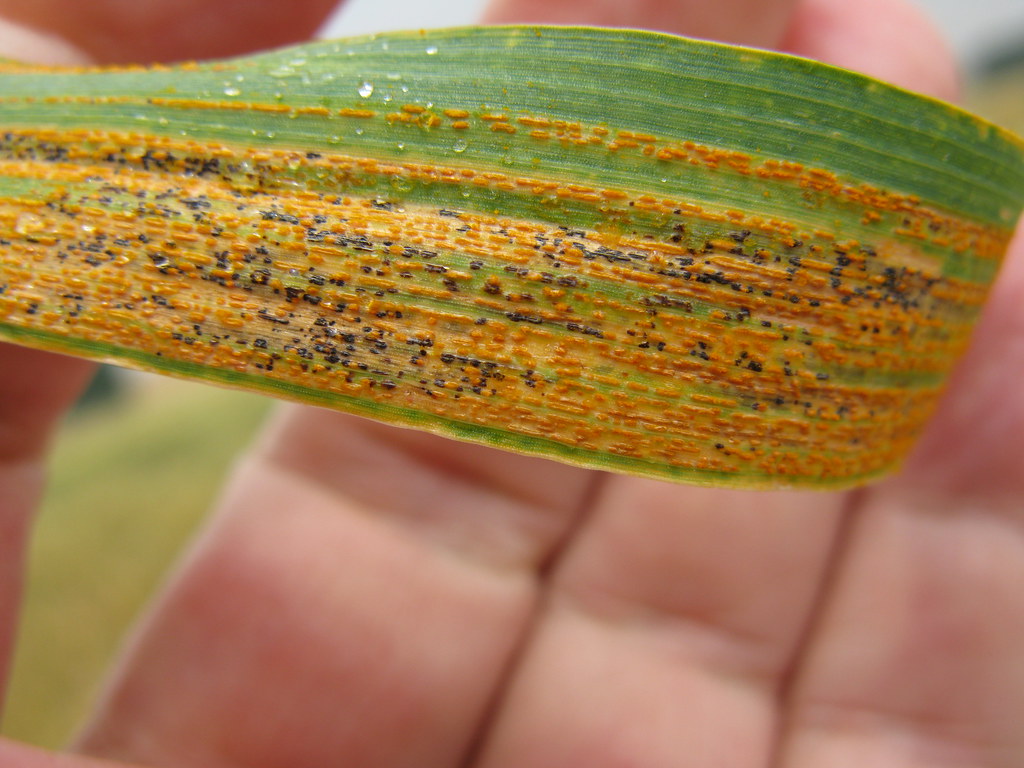
YELLOW OR STRIPE RUST OF WHEAT
Disease symptoms
How you can save our yield from Wheat rust?
Smuts of Wheat
Loose smut caused by Ustilago nuda (Syn. U. segetum)
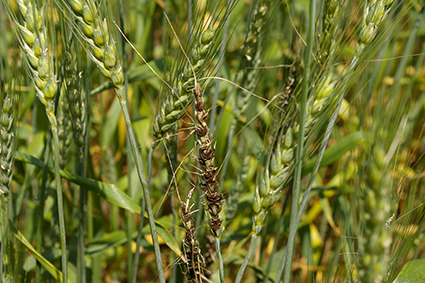
LOOSE SMUT OF WHEAT
Disease symptoms
Management
Flag smut caused by Urocystis agropyri
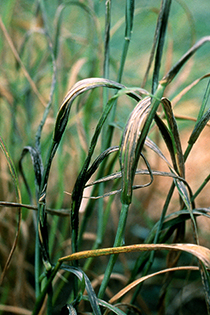
FLAG SMUT OF WHEAT
Disease symptoms
Management
Bunts caused by the smut fungus Tilletia
Hill bunt or Common bunt or Stinking smut or Covered smut caused by Tilletia tritici (syn. Tilletia caries) and T. laevis (syn. T. foetida)
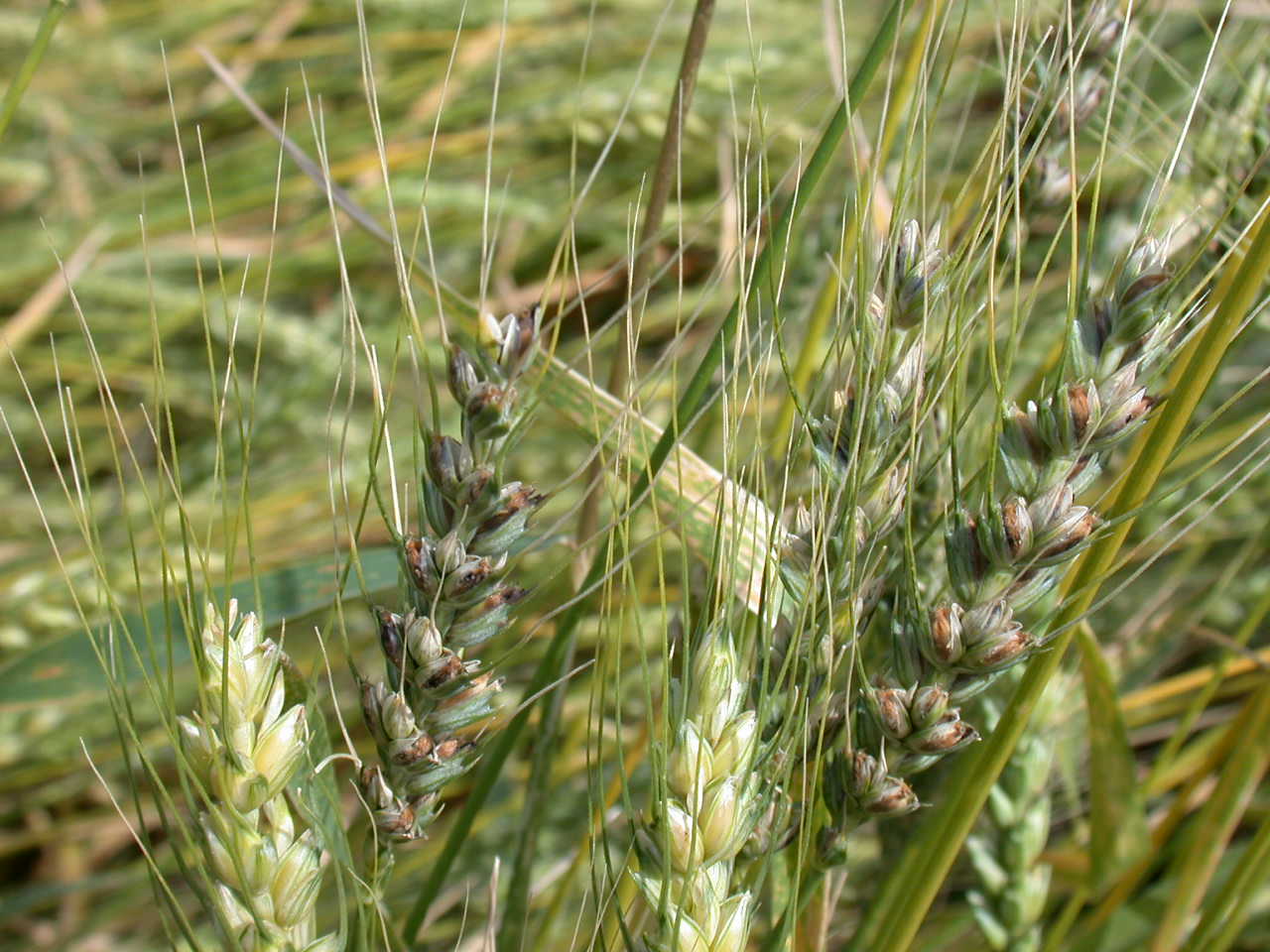
HILL BUNT OR COMMON BUNT OR STINKING SMUT OR COVERED SMUT
Disease symptoms
Management:
Karnal or Partial bunt caused by Tilletia indica (Syn. Neovossia indica)

KARNAL OR PARTIAL BUNT OF WHEAT
Disease symptoms
Management
A)Â Hot water treatment:
The seeds are first soaked in water for five hours at 20 C , the water is drained off and then they are treated with hot water at 49 C for about a minute and finally with hot water at 52 C for 11 minutes. Immediately after the hot water treatment, the seeds are cooled off by dipping in cold water and dried. The dormant mycelium inside the seed dies off by this treatment.
B)Â Use of systemic fungicides:
Seed treatment with systemic fungicides like Carboxin 75% WP@ 2 -2.5 g/ Kg seed or Tebuconazole 2% [email protected] Kg/10 Kg seed or Benomyl 50 % WP @ 2g/Kg seeds.
Powdery mildew of Wheat caused by Blumeria graminis (DC.) Speer

POWDERY MILDEW OF WHEAT
Disease symptoms
Management -
Tundu disease or Yellow ear rot of wheat caused by Calvibacter tritici associated with ear cockle disease (caused by the nematode Anguina tritici)

TUNDU DISEASE OR YELLOW EAR ROT OF WHEAT
Disease symptoms:
Management -
Conclusions:
Post a good monsoon season 2020, I really pray that all farmers should be blessed with a good and healthy crop & hence I've compiled the following key takeaways from this blog:
I'll also be writing on other important factors that affect wheat crop growth and its yield in my next article on Irrigation management for wheat.
So stay tuned with your Farm Friend!










IMPORTANT LINKS
http://krishi.maharashtra.gov.in/Site/Upload/Pdf/PMFBY__2020_Gr_for_publication.pdf
http://krishi.maharashtra.gov.in/Site/Upload/Pdf/PMFBY_Process_Leaflet_Final_Print_File_15-10-2020.pdf